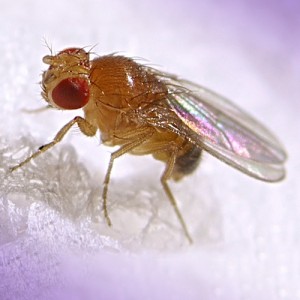SATURDAY, 31 JULY 2010
Flies learn to avoid a specific odour when it is repeatedly presented together with an electric shock. This type of aversive learning occurs in the mushroom body, a region of the insect brain that receives input from dopamine-releasing neurons. However, several types of dopaminergic neurons project to the mushroom body and, until now, it was not known which are important for aversive learning.The Max Planck team introduced a temperature-sensitive protein into one group of dopaminergic neurons called MB-M3. The gene for this protein was inserted in such a way that it was only expressed alongside another gene that is expressed specifically in these neurons. At reduced ambient temperature, this protein blocked MB-M3 neurons and the flies did not learn the association between the odour and the electric shock, indicating the MB-M3 neurons to be vital for aversive learning. With activation of the same neurons, using the same technique but a different protein, flies learned to avoid the odour even in the absence of an electric shock.
"This opens up new horizons", says Yoshinori Aso, the first author, "We can now examine the function of individual nerve cells in an active and behaving animal." The group plan to use similar techniques to determine how experiences are linked to one another at the neuronal level.
Written by Ian Fyfe

